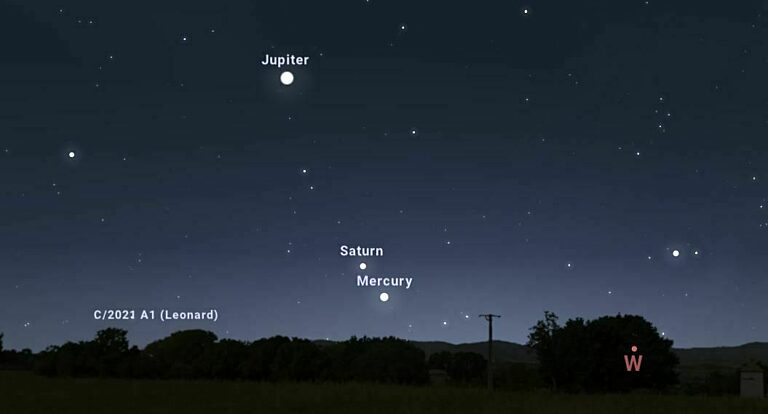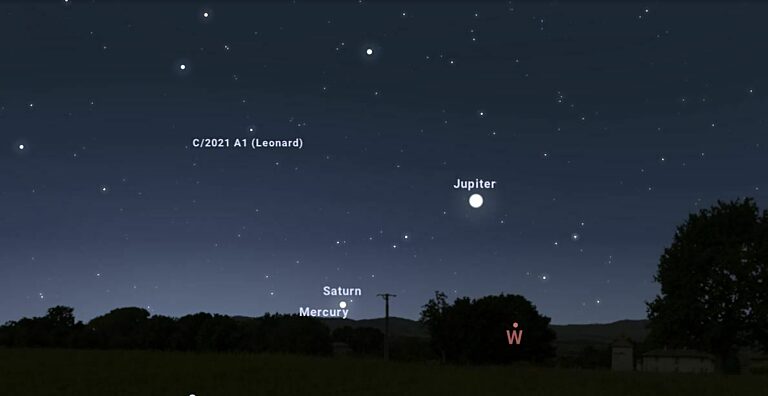Kate Howells • Jan 10, 2022
How to see Comet Leonard
Keep an eye on the skies this month for a rare comet that's fading fast.
Comet C/2021 A1 — a.k.a. Comet Leonard — will be visible for a little bit longer through mid-January. It flew past Earth at a distance of about 35 million kilometers (22 million miles) on Dec. 12, and made its closest approach to the Sun on Jan. 3. The comet is now on course to exit the solar system.
It is now nearly too close to the horizon to see it in the evening from the Northern Hemisphere, but Southern Hemisphere observers might still be able to catch a glimpse of the comet before it vanishes into the cosmos.

Visibility will be best through binoculars or a telescope, and in dark sky areas. Find more night sky viewing tips here.


Comet Leonard also flew by Venus on Dec. 18, coming closer to the planet than any previously documented comet, within 4 million kilometers (2.5 million miles).
Greg Leonard, an astronomer with the University of Arizona’s Catalina Sky Survey, spotted C/2021 A1 in January 2021. This is the thirteenth comet Leonard has discovered.
Support our core enterprises
Your support powers our mission to explore worlds, find life, and defend Earth. You make all the difference when you make a gift. Give today!
Donate

 Explore Worlds
Explore Worlds Find Life
Find Life Defend Earth
Defend Earth

